Last updated on October 23, 2023
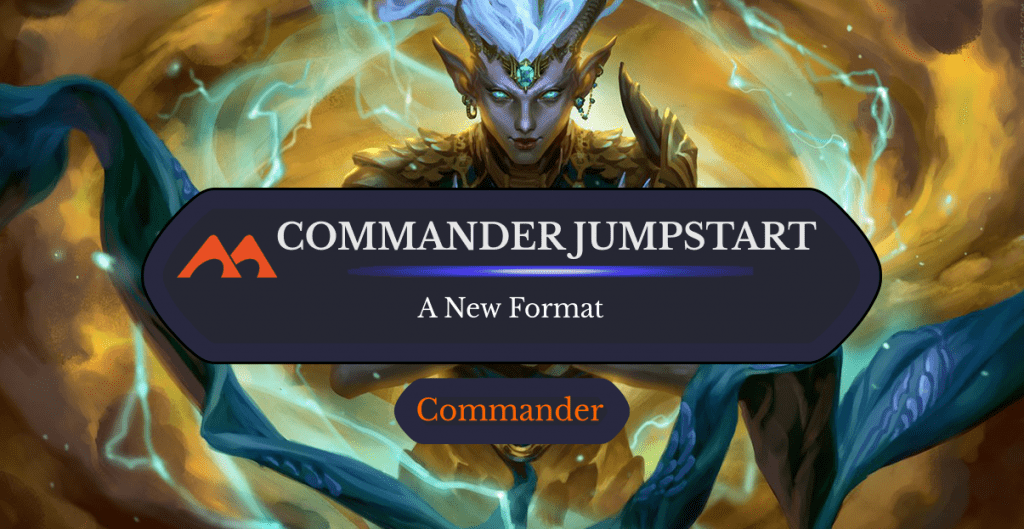
Inniaz, the Gale Force | Illustration by Livia Prima
In the summer of 2020, I was faced with a dilemma that I'm sure many of you can relate to. With the pandemic in full swing, my friends and I couldn't meet up in person to hang out anymore and we needed a new way to get together and socialize. Thankfully most of my buddies are nerdy enough that I was able to talk a few of them into playing some EDH online, so we set a date and all met up virtually through Tabletop Simulator.
A few of us MTG veterans brought extra decklists for our friends who were newer to the game and we set about getting our gaming session underway. Everyone understood the basic rules and the first games went smoothly with everyone enjoying themselves, but we quickly realized we had an issue:
The newer players who didn't know the EDH meta struggled with threat assessment and had a hard time deciding when to play big cards. When tutors came up, they had no idea which cards were part of a winning strategy and struggled to close out games.
The divide in game knowledge was just too much after the first few games. Some people in the group told me that although they enjoyed playing Magic overall, they just didn't enjoy playing against the decks that the veterans had been brewing for years and knew inside and out. The burden of knowledge for such a complicated game was just too much.
There was only one thing we could do: make EDH more accessible.
Commander Jumpstart: How It Happened
Commander Legends Provides the Spark

Thriving Heath | Illustration by Alayna Danner
When Commander Legends spoilers started releasing, I knew exactly what I wanted to work on: Commander Jumpstart. I spent a few weeks playing with the idea of making a Commander draft cube for my friends and I, but my buddies weren't super excited when they found out it'd take an hour or more of drafting before we even started to play. But the release of mono-colored partner commanders like Gilanra, Caller of Wirewood and Tormod, the Desecrator was a game changer for me.

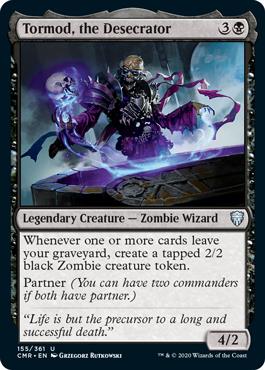
Now I could design smaller decks based around each of them, and my friends and I would just pick two different decks, smash 'em together, and start playing. I started sifting through the newly spoiled commanders to find four from each color that had some similar themes I could focus on to create synergy for the decks and establish how I wanted my cube to play.
Mechanics and Themes
With the plan of making an accessible EDH experience, I set about planning what mechanics I wanted to use. I enjoy playing powerful cards with big, flashy, flavorful effects like Quietus Spike and Disrupt Decorum, and I knew I could make a more aggro-focused meta that enabled these kinds of cards to really shine.
I made sure to pick very general mechanics that allowed me to focus each of the decks on having a unique playstyle related to the commander while still leaving opportunity for synergies between different commanders. I eventually settled on about 10 different themes I wanted to design around including tokens, artifacts, +1/+1 counters, graveyard interaction, Voltron, bigstuff, and more.
With a set of commanders to build around and a framework of mechanics to focus, on it was time to start planning what a finished deck was going to look like.
Keeping it Commander
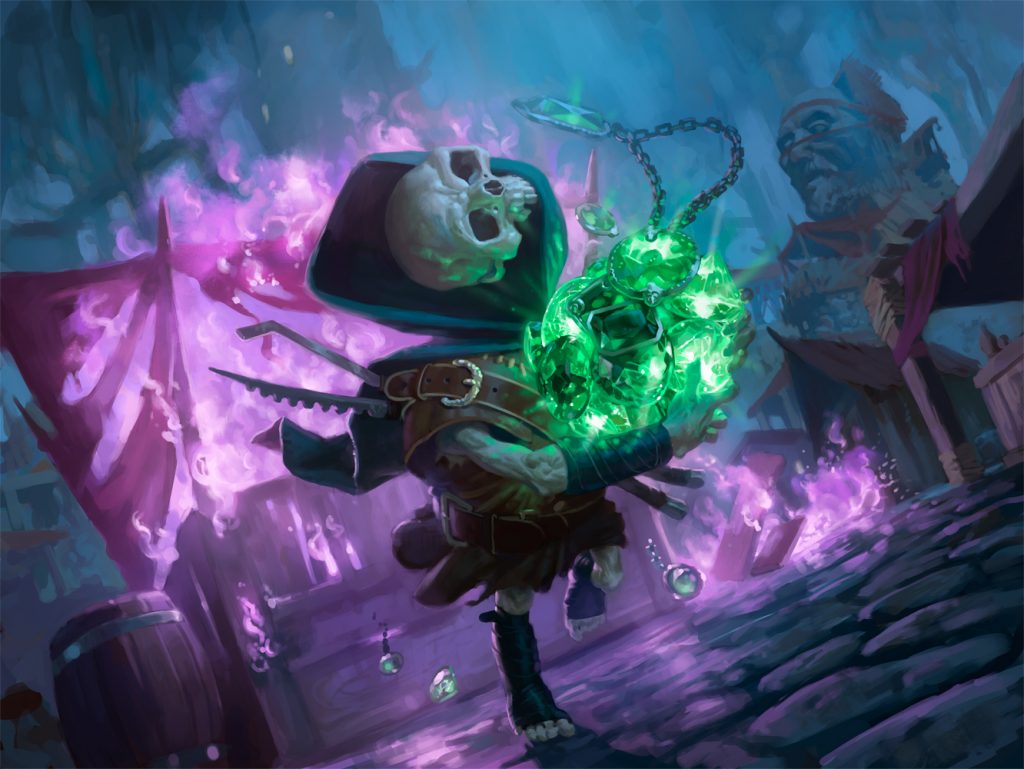
Tinybones, Trinket Thief | Illustration by Jason Rainville
Start with two different-colored commander “decks”
I was hoping for my cube to feel as close to a regular EDH game as I could manage. The first rule I decided on was forcing my players to choose commanders of different colors to make up their finished deck. Every green deck wants to be running Cultivate and I was attempting to maintain the singleton rule, so this seemed the simplest way to solve the problem of having multiple copies.
No more worrying about which deck was lucky enough to have Swords to Plowshares. I could drop the card in every deck if I felt it was justified. I still wanted each deck to be as unique as possible, but some cards are just too good to not include.
Then, receive a 3rd pack with lands, fixing, and other goodies
The same issue arose when I started looking at mana rocks and colorless lands. I couldn't just pick a favorite deck to give Command Tower to, I needed another solution. That combined with the need to have some color fixing in the cube drove me to add a separate pack to each deck.
Once you finished picking two commanders, you'd also be given a third pack based on the color combo you'd chosen. Now I could easily include mana rocks, dual-lands, and even some fun dual-color staples. I set each commander's pack at 40 cards and the dual-color packs at 20, giving me plenty of space for necessary mana fixing as well as some fun flavor cards.
Colorless cards proved to be the biggest hassle to plan around in general since I'd chosen artifacts as a focus for the cube and quite a few of my commanders were going to rely on them. Prioritizing which deck was going to get a certain powerful artifact was a challenge, but it ultimately forced me to develop a more specific identity for the decks and I'm very pleased with the end results.
Bringing it All Together
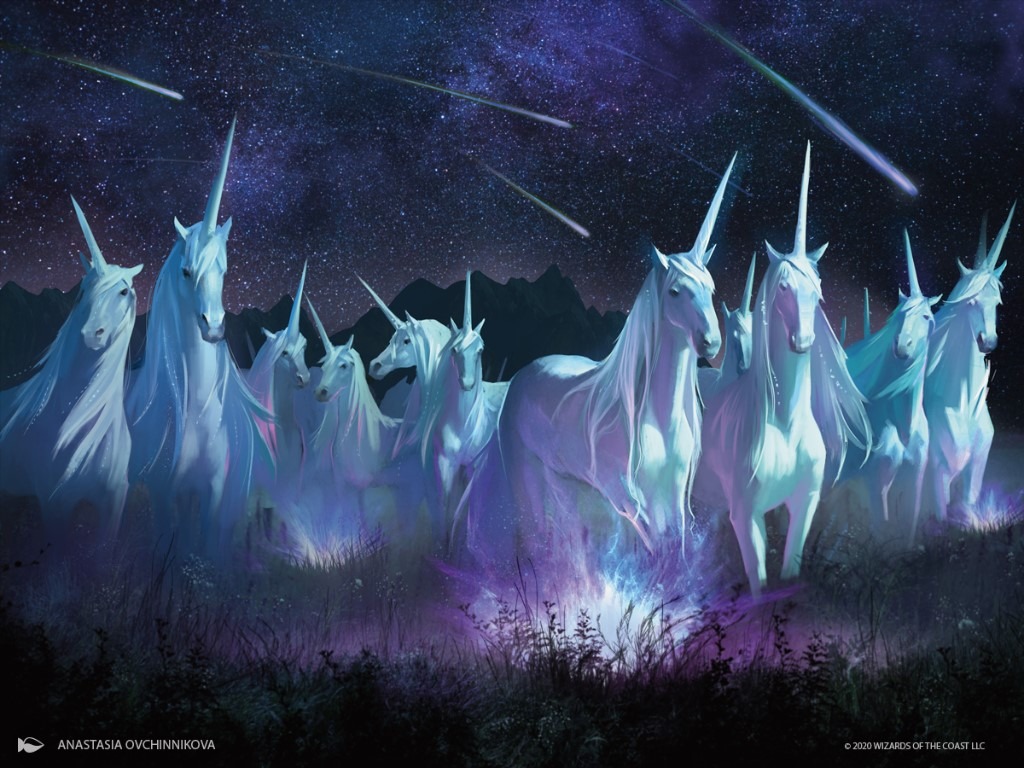
Blessed Sanctuary | Illustration by Anastasia Ovchinnikova
With a framework in place, I turned my attention to constructing the decks and tweaking my cube until I got the right power level and balance. My intention was to have the cube's power firmly at the battlecruiser level while including enough interaction that games stayed fresh and exciting. I also avoided cards that relied on information to be powerful in the interest of keeping the cube approachable.
This meant no forcing players to tutor through decks they were unfamiliar with or time-consuming mechanics that slowed the game down. I wanted to keep the turns quick. Tax effects were few and far between with decks relying more on destruction than prevention and games with big power swings were more common than not.
To counter this explosive value, I had to be very selective of the power cards I included in the cube and make sure I had the removal necessary to deal with the powerful threats I planned to include. Rather than putting in something like Craterhoof Behemoth, which can instantly win the game, I chose Ghalta, Primal Hunger. It requires a turn to come online. Instead of Cyclonic Rift, I opted to use the more flavorful Curse of the Swine. To go along with that, nearly every commander's pack and some of the dual-color packs include a board wipe in case games got a bit too crazy.
Making defensive decks a little less efficient really opened the door to Voltron being an effective strategy which had a very positive effect on the cube's playstyle as a whole. Gone were the days of playing combo solitaire on 15-minute long turns. Consistent aggression and political plays took the forefront instead.
Veterans and new players alike enjoyed the spectacle of watching Rograkh, Son of Rohgahh smash faces with his Sword of Vengeance, and seeing games end to a Rakdos Charm nuking an overzealous Prava of the Steel Legion player was very satisfying.
The Commander Decks
Here are all the monocolored decks based on each commander.
Mono Red Alena
Commander (1)
Planeswalker (1)
Creature (14)
Dragonmaster Outcast
Feldon of the Third Path
Humble Defector
Ilharg, the Raze-Boar
Inferno Hellion
Ingot Chewer
Malignus
Rakka Mar
Scoria Wurm
Skyline Despot
Spitebellows
Terror of the Peaks
Thunderblust
Tuktuk the Explorer
Instant (3)
Chaos Warp
Kazuul's Fury
Valakut Awakening
Sorcery (7)
Blasphemous Act
Cathartic Reunion
Chandra's Ignition
Crackle with Power
Jaya's Immolating Inferno
Jeska's Will
Shatterskull Smashing
Enchantment (2)
Land (12)
Bonders' Enclave
Castle Embereth
Forgotten Cave
Mountain x8
Spinerock Knoll
Mono White Alharu
Commander (1)
Planeswalker (1)
Creature (13)
Abzan Battle Priest
Abzan Falconer
Archangel of Thune
Basri's Lieutenant
Custodi Soulbinders
High Sentinels of Arashin
Luminarch Aspirant
Mangara, the Diplomat
Mikaeus, the Lunarch
Nils, Discipline Enforcer
Soulcatcher
Sun Titan
Victory's Envoy
Instant (3)
Akroma's Will
Crush Contraband
Unbreakable Formation
Sorcery (4)
Austere Command
Collective Effort
Emeria's Call
Makindi Stampede
Enchantment (5)
Cathars' Crusade
Elspeth Conquers Death
Felidar Retreat
Grasp of Fate
Together Forever
Artifact (1)
Land (12)
Mono White Ardenn
Commander (1)
Ardenn, Intrepid Archaeologist
Creature (8)
Armored Skyhunter
Danitha Capashen, Paragon
Eidolon of Countless Battles
Halvar, God of Battle
Kemba, Kha Regent
Puresteel Paladin
Sram, Senior Edificer
Sun Titan
Instant (3)
Heliod's Intervention
Sejiri Shelter
Swords to Plowshares
Sorcery (1)
Enchantment (4)
All That Glitters
Darksteel Mutation
Reprobation
Sigarda's Aid
Artifact (9)
Argentum Armor
Colossus Hammer
Darksteel Plate
Godsend
Loxodon Warhammer
Shadowspear
Sword of Sinew and Steel
Sword of Vengeance
Sword of the Animist
Land (14)
Mono Black Armix
Commander (1)
Creature (12)
Foundry Inspector
Hangarback Walker
Marionette Master
Metalwork Colossus
Mindless Automaton
Noxious Gearhulk
Scrap Trawler
Scrapyard Recombiner
Scuttling Doom Engine
Sly Requisitioner
Walking Ballista
Workshop Assistant
Instant (1)
Sorcery (3)
Agadeem's Awakening
All Is Dust
Morbid Curiosity
Enchantment (2)
Phyrexian Scriptures
Underhanded Designs
Artifact (8)
Ashnod's Altar
Cranial Plating
Genesis Chamber
Grimoire of the Dead
Lithoform Engine
Slate of Ancestry
Strionic Resonator
Trading Post
Land (13)
Mono Blue Brinelin
Commander (1)
Planeswalker (1)
Creature (13)
Arcanis the Omnipotent
Chasm Skulker
Fog Bank
Frost Titan
Guard Gomazoa
Merfolk Trickster
Nadir Kraken
Portal Mage
Sakashima's Protege
Scourge of Fleets
Tempest Caller
Thryx, the Sudden Storm
Tromokratis
Instant (3)
Arcane Denial
Cryptic Command
Sublime Epiphany
Sorcery (3)
Curse of the Swine
River's Rebuke
Sea Gate Restoration
Enchantment (3)
Kiora Bests the Sea God
Mind Unbound
Monastery Siege
Artifact (2)
Land (14)
Castle Vantress
Coral Atoll
Island x10
Memorial to Genius
Sea Gate Wreckage
Mono Green Gilanra
Commander (1)
Creature (19)
Avenger of Zendikar
Bane of Progress
Beanstalk Giant // Fertile Footsteps
Carnage Tyrant
Drumhunter
Engulfing Slagwurm
Eternal Witness
Garruk's Horde
Genesis
Ghalta, Primal Hunger
Goreclaw, Terror of Qal Sisma
Greenwarden of Murasa
Karametra's Acolyte
Manglehorn
Paleoloth
Reclamation Sage
Terastodon
Voracious Hydra
Whiptongue Hydra
Instant (2)
Back to Nature
Return of the Wildspeaker
Sorcery (3)
Bala Ged Recovery
Rishkar's Expertise
Verdant Confluence
Enchantment (1)
Land (14)
Mono Blue Glacian
Commander (1)
Planeswalker (1)
Creature (15)
Chief of the Foundry
Emry, Lurker of the Loch
Etherium Sculptor
Glasspool Mimic
Master Transmuter
Master of Etherium
Memnarch
Padeem, Consul of Innovation
Phyrexian Metamorph
Sai, Master Thopterist
Sharding Sphinx
Spellskite
Steel Hellkite
Steel Overseer
Vedalken Archmage
Instant (1)
Sorcery (1)
Enchantment (4)
Efficient Construction
Mechanized Production
Mirrodin Besieged
Thopter Spy Network
Artifact (3)
Hedron Archive
Mirrorworks
Oblivion Stone
Land (14)
Mono Green Halana
Command (1)
Creature (17)
Acidic Slime
Ambush Viper
Cloudthresher
Drumhunter
Elder Gargaroth
Goreclaw, Terror of Qal Sisma
Grothama, All-Devouring
Hornet Queen
Kogla, the Titan Ape
Pathbreaker Ibex
Rhonas the Indomitable
Siege Behemoth
Soul of the Harvest
Temur Sabertooth
Ulvenwald Tracker
Vigor
Wayward Swordtooth
Instant (4)
Clear Shot
Khalni Ambush
Ram Through
Relic Crush
Sorcery (3)
Bala Ged Recovery
Kodama's Reach
Nature's Way
Enchantment (2)
Garruk's Uprising
In Search of Greatness
Land (13)
Castle Garenbrig
Forest x10
Mosswort Bridge
Oran-Rief, the Vastwood
Mono Green Ich-Tekik
Command (1)
Planeswalker (1)
Creature (17)
Ancient Stone Idol
Arcbound Reclaimer
Brass Herald
Colossus of Akros
Darksteel Colossus
Geode Golem
Gingerbrute
Golem Artisan
Howling Golem
Lodestone Golem
Maul Splicer
Meteor Golem
Mycosynth Golem
Phyrexian Triniform
Platinum Emperion
Tireless Tracker
Vital Splicer
Instant (2)
Sorcery (2)
Bala Ged Recovery
Verdant Mastery
Enchantment (1)
Artifact (2)
Golem Foundry
Lifecrafter's Bestiary
Land (14)
Mono Red Kediss
Commander (1)
Creature (8)
Blood Aspirant
Bloodsworn Steward
Captivating Crew
Dark-Dweller Oracle
Humble Defector
Molten Primordial
Stalking Vengeance
Zealous Conscripts
Instant (2)
Sorcery (10)
Disrupt Decorum
Faithless Looting
Insurrection
Lava Coil
Mass Mutiny
Song-Mad Treachery
Thud
Tormenting Voice
Traitorous Blood
Vandalblast
Enchantment (4)
Fiery Emancipation
Frenzied Fugue
Goblin Bombardment
The Akroan War
Artifact (2)
Land (13)
Castle Embereth
Dwarven Mine
Forgotten Cave
High Market
Mountain x9
Mono Black Keskit
Commander (1)
Creature (12)
Ayara, First of Locthwain
Blood Artist
Endrek Sahr, Master Breeder
Grave Titan
Hangarback Walker
Pawn of Ulamog
Pitiless Plunderer
Plaguecrafter
Priest of Forgotten Gods
Smothering Abomination
Viscera Seer
Zulaport Cutthroat
Instant (2)
Malakir Rebirth
Malicious Affliction
Sorcery (6)
Agadeem's Awakening
Beacon of Unrest
Feed the Swarm
In Garruk's Wake
Night's Whisper
Victimize
Enchantment (3)
Bastion of Remembrance
Dark Prophecy
Phyrexian Reclamation
Artifact (3)
Ashnod's Altar
Mimic Vat
Trading Post
Land (13)
Mono White Prava
Commander (1)
Creature (10)
Angel of Invention
Archetype of Courage
Benalish Marshal
Geist-Honored Monk
Hanweir Militia Captain
Hero of Bladehold
Leonin Warleader
Mentor of the Meek
Sun Titan
Twilight Drover
Instant (6)
Call the Coppercoats
Generous Gift
Kabira Takedown
Path to Exile
Return to Dust
Secure the Wastes
Sorcery (5)
Cleansing Nova
Emeria's Call
Hour of Reckoning
Makindi Stampede
Nomads' Assembly
Enchantment (4)
Court of Grace
Divine Visitation
Felidar Retreat
Intangible Virtue
Artifact (2)
Captain's Claws
Sword of the Animist
Land (12)
Mono White Radiant
Commander (1)
Planeswalker (1)
Creature (15)
Angel of Serenity
Archon of Emeria
Bastion Protector
Battlegrace Angel
Boreas Charger
Brisela, Voice of Nightmares
Bruna, the Fading Light
Cartographer's Hawk
Eidolon of Rhetoric
Gisela, the Broken Blade
Kinjalli's Sunwing
Sephara, Sky's Blade
Spirit of the Labyrinth
Sublime Archangel
Windborn Muse
Instant (2)
Heliod's Intervention
Swords to Plowshares
Sorcery (3)
Devastating Mastery
Emeria's Call
Ondu Inversion
Enchantment (2)
Duelist's Heritage
Ghostly Prison
Artifact (4)
Inquisitor's Flail
Moonsilver Spear
Seraphic Greatsword
Swiftfoot Boots
Land (13)
Mono Red Rograkh
Commander (1)
Creature (5)
Anger
Brass Squire
Goblin Welder
Kazuul's Toll Collector
Leyline Tyrant
Instant (5)
Chaos Warp
Magnetic Theft
Temur Battle Rage
Thrill of Possibility
Valakut Awakening
Sorcery (3)
Faithless Looting
Mizzium Mortars
Vandalblast
Enchantment (4)
Blood Mist
Dictate of the Twin Gods
Dragon Mantle
Shiv's Embrace
Artifact (9)
Basilisk Collar
Bearded Axe
Blackblade Reforged
Blazing Sunsteel
Champion's Helm
Embercleave
Fireshrieker
Gorgon Flail
Hammer of Nazahn
Land (13)
Mono Blue Siani
Commander (1)
Planeswalker (1)
Creature (14)
Archetype of Imagination
Dream Eater
Glasspool Mimic
Keiga, the Tide Star
Kira, Great Glass-Spinner
Loyal Drake
Roil Elemental
Siren Stormtamer
Sower of Temptation
Sprite Noble
Stormtide Leviathan
Thopter Assembly
Warden of Evos Isle
Whirler Rogue
Instant (2)
Sorcery (4)
Curse of the Swine
Devastation Tide
Quasiduplicate
Temporal Mastery
Enchantment (3)
Favorable Winds
Gravitational Shift
Reconnaissance Mission
Artifact (2)
Bident of Thassa
Dowsing Dagger
Land (13)
Mono Green Slurrk
Commander (1)
Planeswalker (1)
Creature (15)
Bloodspore Thrinax
Champion of Lambholt
Fertilid
Forgotten Ancient
Gyre Sage
Hooded Hydra
Iridescent Hornbeetle
Kalonian Hydra
Loyal Guardian
Mycoloth
Pir, Imaginative Rascal
Ravenous Slime
Reclamation Sage
Renata, Called to the Hunt
Steelbane Hydra
Instant (3)
Inspiring Call
Nature's Claim
Vastwood Fortification
Sorcery (3)
Bala Ged Recovery
Overwhelming Stampede
Turntimber Symbiosis
Enchantment (4)
Branching Evolution
Evolutionary Leap
Greater Good
Kenrith's Transformation
Artifact (1)
Land (12)
Mono Red Toggo
Commander (1)
Planeswalker (1)
Creature (14)
Combustible Gearhulk
Duplicant
Embraal Gear-Smasher
Gadrak, the Crown-Scourge
Goblin Welder
Goldspan Dragon
Hellkite Tyrant
Junk Diver
Loyal Apprentice
Myr Battlesphere
Platinum Angel
Quicksmith Genius
Reckless Fireweaver
Wurmcoil Engine
Sorcery (6)
By Force
Faithless Looting
Hour of Devastation
Indomitable Creativity
Scrap Mastery
Shatterskull Smashing
Enchantment (1)
Artifact (3)
Inspiring Statuary
Mind's Eye
Mirage Mirror
Land (14)
Evolving Wilds
Fabled Passage
Great Furnace
Grixis Panorama
Jund Panorama
Mountain x6
Myriad Landscape
Naya Panorama
Terramorphic Expanse
Mono Black Tormod
Commander (1)
Creature (15)
Bloodgift Demon
Cryptbreaker
Grave Titan
Gravecrawler
Hell's Caretaker
Kalitas, Traitor of Ghet
Midnight Reaper
Phyrexian Delver
Plaguecrafter
Puppeteer Clique
Ravenous Chupacabra
Sheoldred, Whispering One
Sifter of Skulls
Syr Konrad, the Grim
Whisper, Blood Liturgist
Instant (2)
Sorcery (5)
Agadeem's Awakening
Deadly Tempest
Dread Return
Living Death
Victimize
Enchantment (2)
Phyrexian Reclamation
Tortured Existence
Artifact (2)
Land (13)
Castle Locthwain
Crypt of Agadeem
Dakmor Salvage
Phyrexian Tower
Swamp x9
Commander Jumpstart Supplemental Packs
These are the packs you receive based on your color pair after you've picked your two commander decks.
Quick note: If you view the decks on Moxfield, click the “Customize View” button, then click the Group By –>”Custom Tag” in order to see the packs sorted properly.
All Packs
Azorius
Boros
Dimir
Golgari
Gruul
Izzet
Orzhov
Rakdos
Selesnya
Simic
Great Success?

Branching Evolution | Illustration by Tomasz Jedruszek
After extensive playtesting with my own playgroup and with volunteers I recruited from r/EDH, I’m happy to say the feedback has been incredibly positive. Decks seem to be relatively well balanced, and cards that are often overlooked in regular EDH have a chance to really shine in the limited meta.
Seeing Grothama, All-Devouring terrorize the board, or watching the weenie player’s delight turn to dread as his Nomad's Assembly army spells his downfall when an opponent drops Rakdos Charm has been fresh and exciting. Games tend to be very back-and-forth with intense and interesting board states happening frequently.
The buddies who were hesitant to join have all been greatly enjoying the ease of setup and replayability of the cube. Whenever we play it takes only 15 minutes for all of us to have brand new decks with interesting synergies and get the game underway. Games are never the same and even when someone picks a commander combo that’s been seen before it’s playstyle varies wildly based on which half of the deck pops up.
Months after starting this project, I'm happy with how far it's come along, and my friends and I are thoroughly enjoying the gameplay offered by the cube. Having a way to make up new decks in just a few minutes has helped me convince more people to join us. But there's still more I'd like to accomplish.
Problematic lines of play will no doubt turn up weeks or months in the future and I've tweaked my decklists multiple times when cards like Grave Pact felt a bit too oppressive and unfun.
I've managed to get the cube posted up on the Steam Workshop for anyone who's interested in giving it a try, and hopefully it can help you convince some of your less magically inclined buddies to enjoy the format I've spent so much time playing with my own friends!
Follow Draftsim for awesome articles and set updates: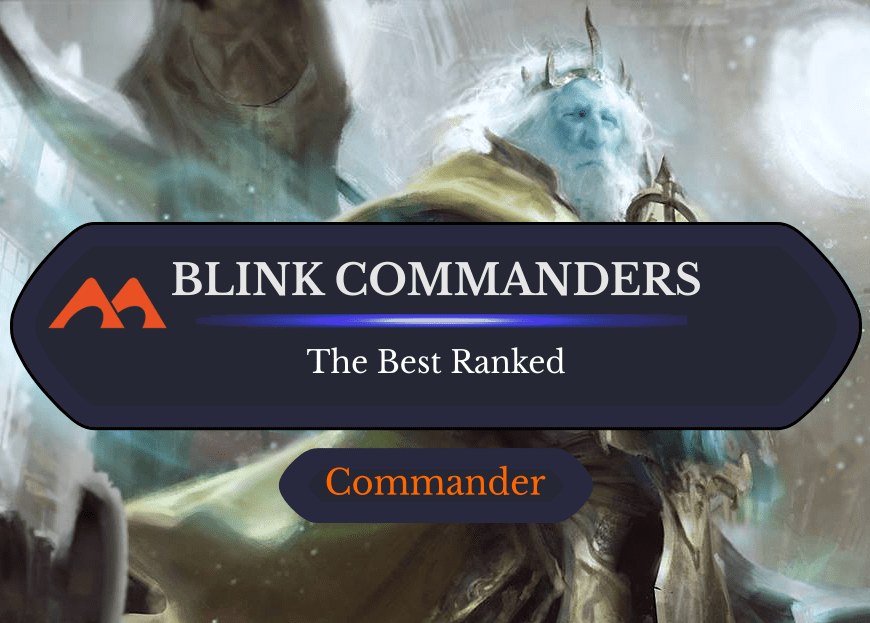
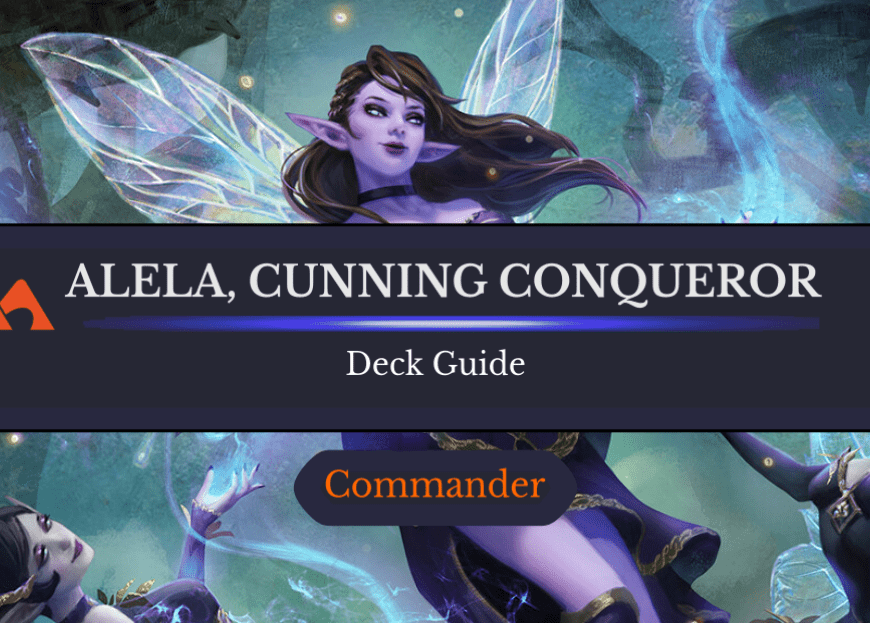
3 Comments
Hi, awesome work on this cube, it’s a true inspiration to got through all the decks ! I have small question regarding lands, with the 2 40 cards packs, the colorless pack and the bicolor packs decks can go from 30 to 34 lands, was there no manascrew issues during the playtesting or was it fine ? Also how do you make players chooses the commanders ? Do you pass around some packs in a draft-style fashion or is it pre decided ? Cheers, thanks for the awesome work !
I love this… Would love to read about changes you make to these decks (or new decks you add to this jumpstart cube)… Think I am going with your approach… Seems like a fun way to add variety but keep the card pool and strategy under control especially for new players.
Anyone building or updating these card packs ?
I have enjoyed this format very much. New magic players are not struggling with deckbuilding and drafting and can jump into the game within minutes.
With new commander legends soon arriving i think it will be possible to build packs one with a commander and other with background.
Add Comment